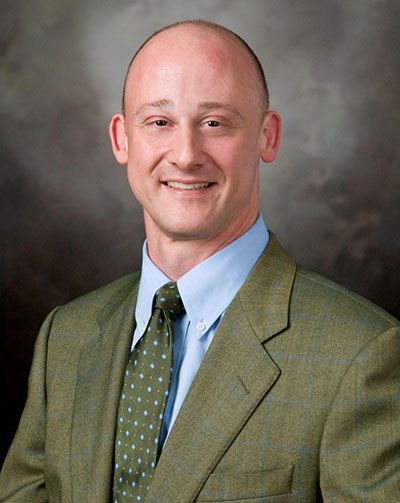Sleep Apnea Relationship with Fibromyalgia
 Summary article written by Rae Marie Gleason, Medical Education & Research Director for the National Fibromyalgia & Chronic Pain Association in collaboration with Victor Rosenfeld, MD.
Summary article written by Rae Marie Gleason, Medical Education & Research Director for the National Fibromyalgia & Chronic Pain Association in collaboration with Victor Rosenfeld, MD.Polysomnography with Quantitative EEG in Patients with and without Fibromyalgia, Journal of Clinical
Neurophysiology, November 2014.
You might want to put some new thought into changing old sleep habits. Research shows that most people with fibromyalgia have a disrupted sleep pattern. It is important for people with fibromyalgia (FM) to know just what kind of sleep condition they have. A sleep lab study can identify each person’s particular problem, which can then be treated. An important study by Dr. Victor Rosenfeld, a neurologist and sleep specialist, published last year in the Journal of Clinical Neurophysiology gives some interesting insights into sleep irregularities in people with fibromyalgia. He found that 45% of the FM group had obstructive sleep apnea, and significant differences were present in the qEEG ratio of delta to alpha frequency power, which was 95% specific for FM.
In 1975 Dr. Harvey Moldofsky, a psychiatrist at the University of Toronto was the first person to publish an article on disrupted sleep patterns in fibromyalgia. In sleep studies of patients with FM and healthy subjects undergoing Stage 4 sleep deprivation, his research team observed in both groups the same irregular presence of alpha-rhythms in the non-rapid-eye movement (NREM) or alpha-delta sleep electroencephalogram (EEG), a common tool used in sleep research.
Dr. Moldofsky’s healthy control subjects were actually college students who agreed to take part in one of his earlier sleep research studies. In that study he discovered that after a few nights of deprived sleep caused by continually waking the students when they entered Stage 4 sleep they reported symptoms of achiness and muscle soreness. When the students were able to resume normal sleep patterns these symptoms disappeared. At the same time another University of Toronto researcher, Dr. Hugh Smythe a rheumatologist and fibromyalgia researcher had shared information with Dr. Moldofsky regarding the body wide tenderness of his patients. Since the achy symptoms of the healthy sleep study participants seemed to mimic the symptoms of FM, the two doctors decided to test a possible theory that FM was caused by some type of sleep deprivation.
Putting Dr. Smythe’s fibromyalgia patients together with Dr. Moldofsky’s healthy student volunteers gave the two doctors the opportunity to scrutinize sleep patterns and resulting symptoms. In the healthy subjects, Stage 4 deprivation was accompanied by the temporary appearance of musculoskeletal and mood symptoms comparable to the symptoms seen chronically in FM patients. It was suggested that the external arousing stimulus, which induced alpha-delta sleep in the research subjects, was paralleled in the patients by an internal arousing mechanism. The doctors surmised that such a mechanism, acting in competition with the NREM sleep system, would impair the presumed restorative function of NREM and lead to the development of FM symptoms. They proposed that the FM symptom complex should be considered a “non-restorative sleep syndrome.” The results of their study supported the hypothesis that a disorder of serotonin metabolism serves as a basis for both the EEG sleep disturbance and FM.
Decades have passed since Dr. Moldofsky’s original work, and the debate continues regarding whether FM is caused by some kind of sleep disturbance. Many new scientific discoveries have been made involving sleep and its significance in preserving and instilling good health. Dr. Victor Rosenfeld, a neurologist and sleep expert from the SouthCoast Health in Savannah, Georgia published an article in the September 2014 Journal of Neurophysiology entitled “Polysomnography with Quatititative EEG in Patients with and without Fibromyalgia.”
In essence, Dr. Rosenfeld replicated Dr. Moldofsky’s work using a newer technique called quantitative electroencephelopgraphy (qEEG), which essentially allows computerized analysis of the deep sleep disruptions called alpha intrusions, as opposed to the painstaking analysis by Moldofsky which was done by hand. In addition, Dr Rosenfeld discovered a high prevalence of obstructive sleep apnea in his FM study subjects.
Obstructive sleep apnea impacts autonomic arousal which is mediated by the autonomic nervous system (ANS). The ANS which acts unconsciously and regulates heart rate, digestion, respiratory rate, papillary response, urination and sexual arousal, and is the primary mechanism in control of the fight-or-flight response. This significant finding is now being reported in recent studies around the globe in patients with FM.
Polysomnography (PSG) is a comprehensive recording of the biophysiological changes that occur during sleep. It is usually performed at night during sleep in a special laboratory, sometimes utilizing a hotel room type setting in order to help patients feel at ease and better able to sleep in a foreign environment. The PSG monitors many body functions including brain EEG, eye movements, muscle activity, snoring, EKG, during sleep. Since sleep apnea was identified in the 1970s, breathing functions respiratory airflow and respiratory effort indicators have been added along with peripheral pulse oximetry, the measurement of oxygen saturation of the blood.
Dr. Rosenfeld’s study objective was to characterize the polysomnographic and quantitative electroencephalographic (qEEG) features of FM and determine if patients differ in these measures when compared to a control group of sleep disorder patients.
The study was performed at a community-based sleep medicine center, and the patients underwent polysomnography over a two-year period. The research subjects un derwent all-night polysomnography for evaluation of a sleep disorder and FM. The resulting polysomnograms were interpreted for routine sleep measures and qEEG was performed to measure the delta and alpha frequency power during non-REM sleep. Resulting data were analyzed according to FM diagnosis.
The results of Dr. Rosenfeld’s study were remarkable. Of the 385 patients in the study, 133 had fibromyalgia according to the 1990 American College of Rheumatology Fibromyalgia Diagnostic Criteria. Obstructive sleep apnea was present in 45% of the FM, which means that Obstructive Sleep Apnea is twice as common in FM patients as compared to the general population. There have been a number of recent smaller studies that have reported similar findings, but Dr Rosenfeld’s was the largest study of FM patients to date. Sleep apnea is associated with significant medical issues, including high blood pressure, stroke, heart attack, and diabetes to name a few, and is extremely treatable with CPAP (continuous positive pressure) for severe cases, and oral appliances and other techniques for milder cases. It is now recommended that anyone with FM and any forms of sleep complaint should undergo a sleep study to be evaluated for this sleep disordered breathing.
Significant differences were also present in the qEEG ratio of delta to alpha frequency power. Basically the alpha frequencies disrupt the deeper restorative delta frequencies. This is thought by some sleep experts to be related to non-refreshing sleep and fatigue that FM patients commonly experience and may not be identified in a routine sleep study that does not specifically look at the Delta/Alpha (D/A) ratio. In Dr. Rosenfeld’s study, a D/A ratio of less than 10 was highly sensitive for fibromyalgia, meaning it would pick up most cases, and a D/A ratio of >10 most likely means the patient did not have FM. A D/A ratio of <1 was highly specific for FM, meaning the diagnosis is 95% likely.
Interestingly the use of common sedatives and sleep aids did lower the D/A ratio in both the fibromyalgia and non-fibromyalgia groups but did not affect the overall results. Periodic limb movements thought to be related to FM actually were not commonly seen in his study. Even though patients with FM complain of poor quality sleep and their ability to sleep, the “sleep efficiency” did not differ significantly. Again, the non-refreshing quality of the sleep in FM, thought to be related to the alpha intrusions, was easily measured by the D/A ratio using qEEG, and now can be used as a biological marker or measure of FM. It will be interesting to see if other large scale studies can replicate and confirm these important findings.
The level of brain activity during sleep is controlled by many factors related to the autonomic systems of the body. Sleep apnea can also exacerbate the autonomic disruptions of the body. The autonomic system has been difficult to test, but newer methods such as testing for Heart Rate Variability (HRV) are becoming more widespread. It terms of what can be done to improve the low Delta/Alpha ratio seen in FM patients, there is no current FDA approved medication; however, experimental approaches such as the use of Sodium Oxybate, which is FDA approved for narcolepsy and cataplexy, has been shows to reduce alpha intrusions, reduce pain and fatigue in patients with FM in large, multi-center, double-blind placebo controlled trials.
The results of Dr. Rosenfeld’s study demonstrated that sleep disorders identified by routine polysomnography, including obstructive sleep apnea, are common in fibromyalgia, but periodic leg movement disorder and poor sleep efficiency are not. Most remarkably, this study showed that a qEEG low delta/alpha ratio during non-REM sleep can differentiate patients with fibromyalgia from others who are referred for polysomnography. Additionally, consideration of the use of benzodiazepine and benzodiazepine agonist medications by the sleep study participants played a role when the delta/alpha ratio data was analyzed.
After so many years of searching for more answers regarding the lack of sleep with FM symptoms, it is satisfying to see that Dr. Rosenfeld has been able to show consistently a type of sleep anomaly that is specific to FM. This study should spur interest in further research looking at the relevance of sleep, the autonomic arousal system and their influence on the development of FM symptoms. Perhaps better treatments involving alleviating sleep abnormalities FM will also evolve.
Dr. Rosenfeld's Suggestions for a Better Night’s Sleep
1. Have a good “wind-down” routine at bedtime.
2. Manage stress! Try mindfulness techniques and remember to breathe.
3. If you have restless leg syndrome (RLS), avoid medicines that worsen RLS (over the counter antihistamines such Actifed, dopamine antagonists/antipsychotics, and tricyclic antidepressants such as Elavil).
4. Consider a sleep study to look for:
- sleep apnea
- periodic limb movements
- alpha intrusions
- Work with your doctor to create a logical sleep medication regimen, if needed

Dr. Rosenfeld is Board Certified in Neurology and Sleep Medicine. He is currently Neurology Department Head and Medical Director of the Sleep Center at SouthCoast Health in Savannah, Georgia. He received his Medical Degree from Emory University and completed Internal Medicine at Alton Oschner Medical Foundation, followed by a Neurology Residency at University of Miami where he was Chief Resident. Dr Rosenfeld then completed a Fellowship in Electrophysiology at U.C.L.A. He has served as Chairman of the Department of Neurology and Neurosurgery at Cottage Hospital, as well as the Medical Director for Neurophysiology at Cottage Hospital and Medical Director for Sleepmed of Santa Barbara before joining SouthCoast Medical Group in Savannah, Georgia.
Dr. Rosenfeld has numerous medical publications in the fields of Sleep Medicine, Sleep Electrophysiology, Migraine, Neuro-Oncology, Huntington's Disease, Guillan-Barre Syndrome, and Fibromyalgia and is a frequent medical lecturer on a broad range of disease states including Sleep Apnea, Restless Legs, Narcolepsy, Fibromyalgia, Alzheimer’s, Epilepsy, Neuro-virology, and Migraine, Chronic Fatigue, Stroke, Ataxia, Neuroendocrinology, Neurotoxiciology, and Insomnia. His current research interests include Chronic Pain and Fatigue and their relationship to sleep. He was a Principal Investigator for a multi-site International Phase III Trial studying the effects of Xyrem in patients with Fibromyalgia as well as a Principal Investigator for the pivotal trial studying Hypoglossal Nerve Stimulation for the treatment of Obstructive Sleep Apnea. Dr. Rosenfeld is proud to be part of SouthCoast Health and a member of the Savannah community.





